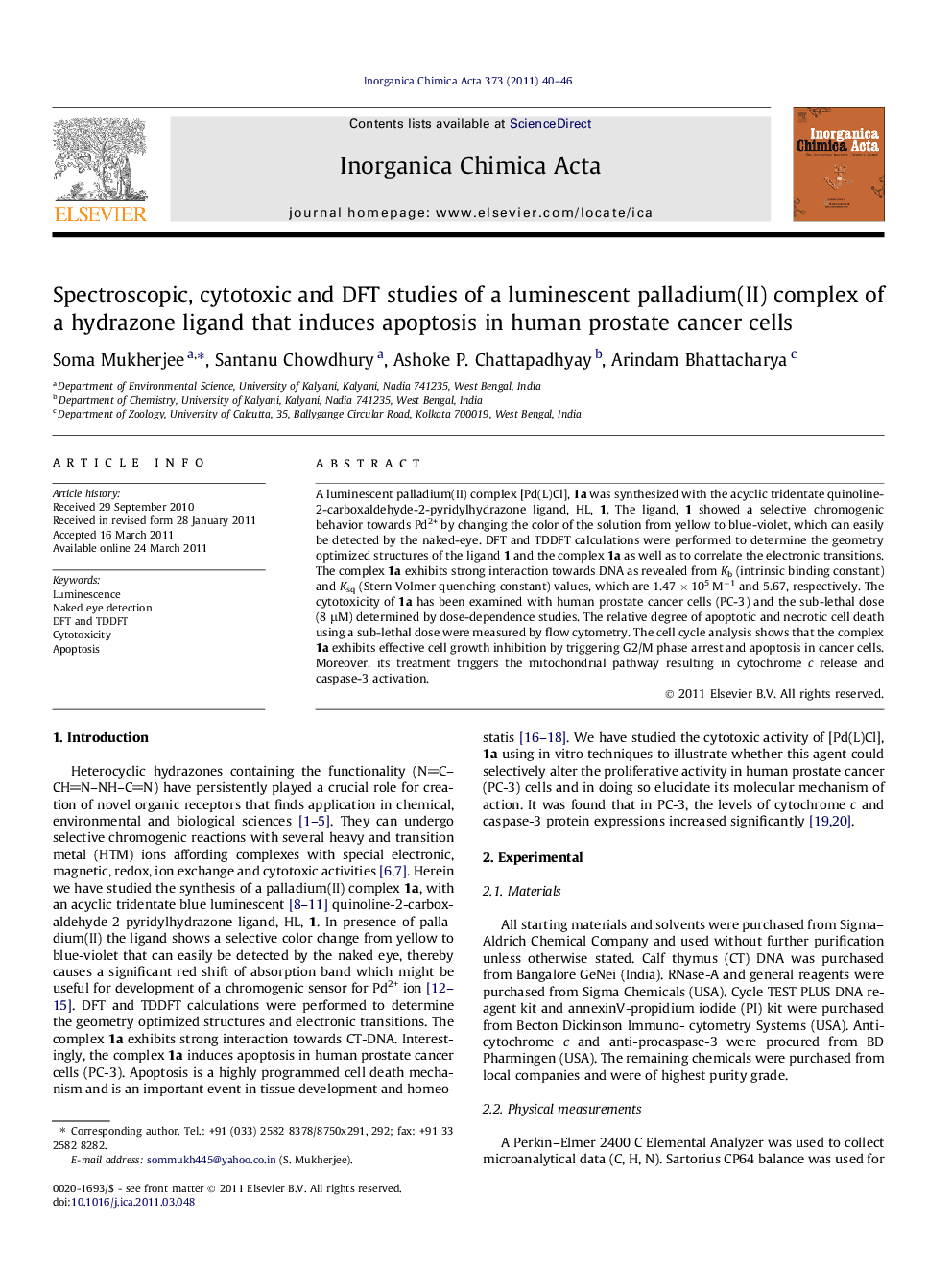| Article ID | Journal | Published Year | Pages | File Type |
|---|---|---|---|---|
| 1311061 | Inorganica Chimica Acta | 2011 | 7 Pages |
A luminescent palladium(II) complex [Pd(L)Cl], 1a was synthesized with the acyclic tridentate quinoline-2-carboxaldehyde-2-pyridylhydrazone ligand, HL, 1. The ligand, 1 showed a selective chromogenic behavior towards Pd2+ by changing the color of the solution from yellow to blue-violet, which can easily be detected by the naked-eye. DFT and TDDFT calculations were performed to determine the geometry optimized structures of the ligand 1 and the complex 1a as well as to correlate the electronic transitions. The complex 1a exhibits strong interaction towards DNA as revealed from Kb (intrinsic binding constant) and Ksq (Stern Volmer quenching constant) values, which are 1.47 × 105 M−1 and 5.67, respectively. The cytotoxicity of 1a has been examined with human prostate cancer cells (PC-3) and the sub-lethal dose (8 μM) determined by dose-dependence studies. The relative degree of apoptotic and necrotic cell death using a sub-lethal dose were measured by flow cytometry. The cell cycle analysis shows that the complex 1a exhibits effective cell growth inhibition by triggering G2/M phase arrest and apoptosis in cancer cells. Moreover, its treatment triggers the mitochondrial pathway resulting in cytochrome c release and caspase-3 activation.
Graphical abstractA luminescent palladium(II) complex [Pd(L)Cl], 1a was synthesized with the acyclic tridentate quinoline-2-carboxaldehyde-2-pyridylhydrazone ligand, HL, 1. The ligand, 1 showed a selective chromogenic behavior towards Pd2+, which can easily be detected by the naked-eye. The complex 1a exhibits DNA binding activities and induces apoptosis in human prostate cancer cells.Figure optionsDownload full-size imageDownload as PowerPoint slideHighlights► Recognition of the ligand as a selective chromogenic agent for Pd2+. ► DFT and TDDFT established the electronic structures and spectroscopic transitions. ► The palladium complex exhibits strong interaction towards DNA. ► The complex triggers G2/M phase arrest and apoptosis in PC-3 cells. ► Mitochondrial pathway results cytochrome c release and caspase-3 activation.
